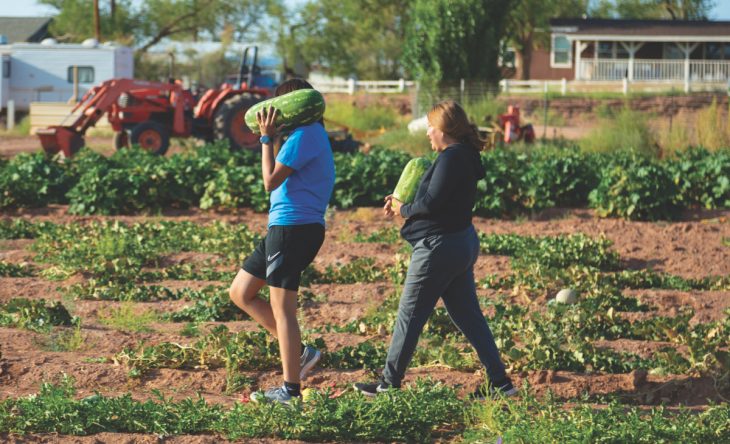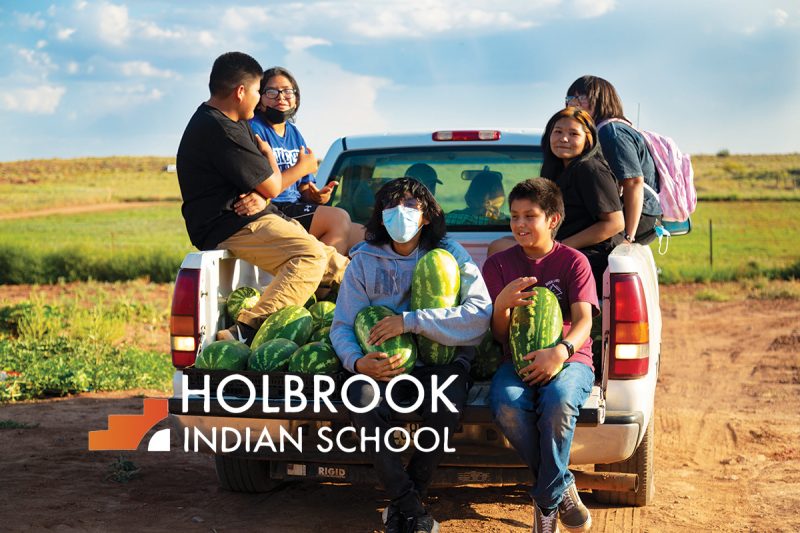November is most widely known in the U.S. for Thanksgiving and the start of the shopping/giving season, but November is also Native American heritage month. If you follow Holbrook Indian School (HIS), you get a glimpse into Native American culture (particularly as it is currently) throughout the year. Every November, however, the school goes a little deeper into sharing aspects of the culture of its students—primarily the Navajo.
This year, the focus is on four aspects of Diné or Navajo culture: Navajo farming, food, and diet; Native neighbors of the Navajo; the Navajo homestead; and Navajo government. We will explore these aspects and their relationship to what students at HIS learn and reinforce in their classes.
Navajo farming, food, and diet
This semester, high school students in the HIS Navajo language class have created food menus for their fictitious restaurant businesses. Senior Ariana and junior Jenesis have come up with Grandma’s Strong Stuff as their food business. On their menu is a list of traditional Navajo beverages, along with some more modern options like various mutton (sheep and goat meat) dishes. The diet and food practices of the Navajo have evolved over the years, yet even with these changes, Navajo cuisine remains unique, reflecting the history of its people.
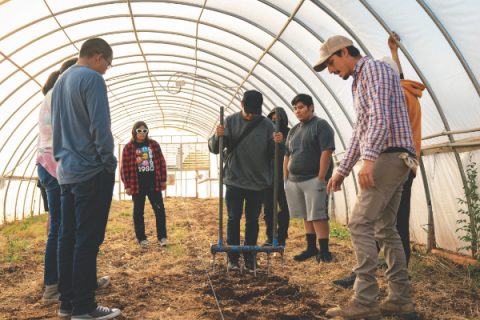
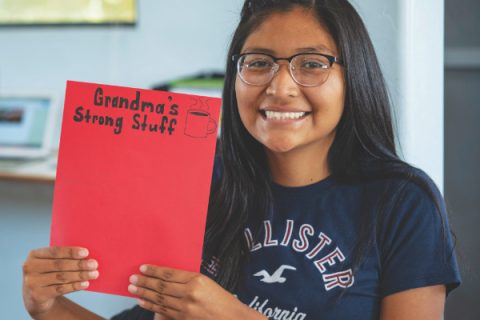
Corn, beans, and squash are “the Three Sisters who sustain Native America,” a phrase used by Navajo journalist Andi Murphy in her PBS article to describe the three core indigenous crops of many Native tribes. These three crops are called sisters because of the symbiotic relationship in how the Navajos farm them.
The three sisters are plants indigenous to the Americas, as are onions, various melons, and piñons, a pine nut that only blossoms every three or four years. For the Navajo, these plant foods, among others, have made up most of their “plate” since time immemorial, according to HIS Navajo language teacher Sam Hubbard. Deer was the leading big game food, with turkey being another meat option. Because of the effort required to hunt, meat, in general, was used as a treat for special occasions.
Sheep and goats were introduced when the Spaniards first made contact in the 1500s. Today mutton in its various forms is a big part of the Navajo diet and culture. Fry bread is another noteworthy Navajo delicacy used today in Navajo tacos, Navajo burritos, and other meals. Fry bread and other flour-based foods originated in the 1860s when the U.S. government introduced flour to the Navajo. “I think it goes back to the long walk in 1864-1868,” said Mr. Hubbard. “The government gave us flour, and we had to do something with it. I don't think we made bread before that.”
This shows the resilience and innovation of the Navajo people who, during this time, were displaced from their homeland. Upon returning, they had to make do with the resources they were given.
“I tell my students, we are always creating new traditions, and fry bread is part of that,” Mr. Hubbard said.
The Navajo homestead
This year, the elementary students at HIS are reinforcing another essential aspect of Navajo culture. They are building models of a traditional hogan, filling them with furniture while learning the names in the Navajo language.
Some of the items in a hogan include a wood stove or fire of some kind and sheepskins used as a mattress. Every hogan is built facing east toward the rising sun. Hogans are a sacred place as well as a home. Next semester, Mr. Hubbard will introduce the Hebrew sanctuary to compare it to the Navajo hogan. There are many similarities between the Hebrew sanctuary and hogan.
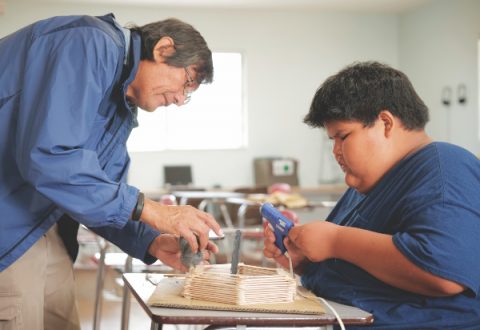
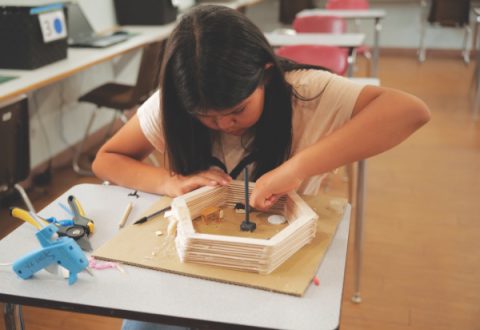
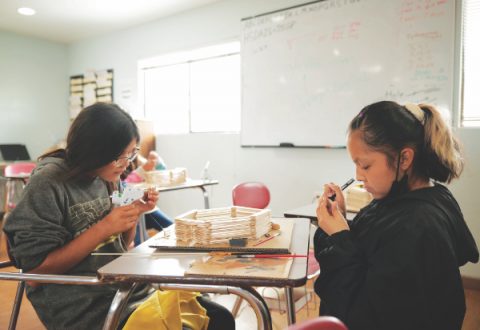
Native neighbors of the Navajo
The Navajo government class and Navajo language class provide students with important connections to their Native culture and roots. “Part of the Navajo language class is learning about our culture,” Mr. Hubbard said, “and comparing our culture to other tribes and languages.”
Once a year, students take a field trip to the Apache Museum on the White Mountain Apache Reservation, which is slightly over 90 miles south of the Navajo Nation. Some of the students who have attended HIS are Apache. The Apache are closely related to the Navajo; the languages are similar, and Mr. Hubbard says he can understand some of what they say when listening to them talk.
Some of the nations and tribes close to the Navajo Nation are the Ute and the Mountain Ute Tribe (both along the northern borders); the Jicarilla Apache Tribe to the east; the Zuni Pueblo to the south; and the Hualapai Bands in the west.
Navajo Government
The Navajo Nation is a sovereign nation and holds four sessions throughout the year during which they pass laws. They do that in the Nation’s capital, Window Rock. The HIS Navajo government class has gone to Window Rock to watch the speeches and see the procedures.
Mr. Hubbard shared one application from Navajo history that shows the sovereignty of the Navajo Nation:
“One of the things I've taught in class is we have been to war with Spain, Mexico, and the United States. Mexico and Spain did not defeat us [Navajo Nation]. The United States finally defeated us in 1864 and forced relocation. Our ultimate destination was Oklahoma, moving from Arizona/New Mexico and the Four Corners area. But in 1868 we signed a treaty with the U.S., and because of that treaty, we returned to our original area. The main reason I bring that out to the students is to show that we are recognized as a nation. Treaties are only signed between nations, so I tell the students we are a nation within a nation.”
The Navajo Nation government is set up similarly to the U.S. government, with legislative, judicial, and executive branches. Within the Navajo Nation, there are 110 chapters that can be compared to something like a local city government. They are different from U.S. city governments in that they don't really have to consult the state for local laws and policies. They also have their own elections for city officials. In the Navajo Nation, local chapters answer to the Navajo government in order to make any laws as well as elect officials. It's a bit more communal.
This year is a presidential election year, and the process is similar to the U.S. elections.
Thanks to the generous supporters of HIS, Navajo students have a place in the Pacific Union where they can live, learn, and grow in Christ, while preserving and celebrating their heritage.
Consider supporting this month by visiting HolbroookIndianSchool.org.
____________________
By Chevon Petgrave
